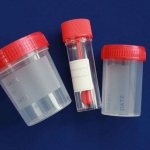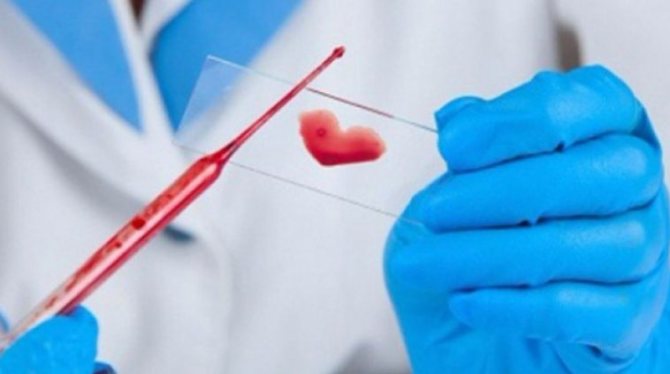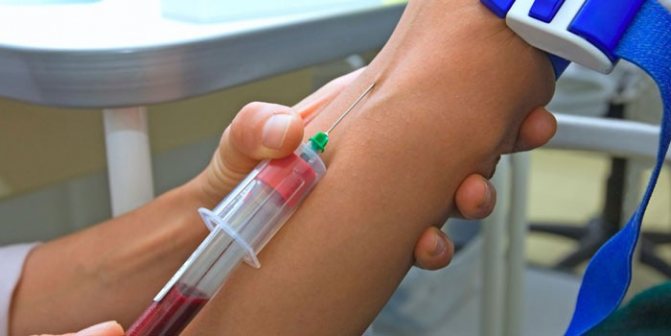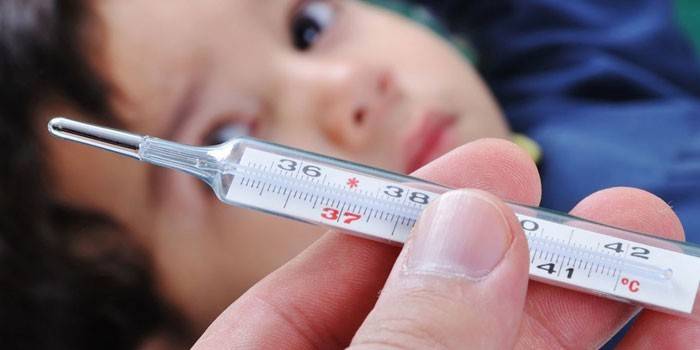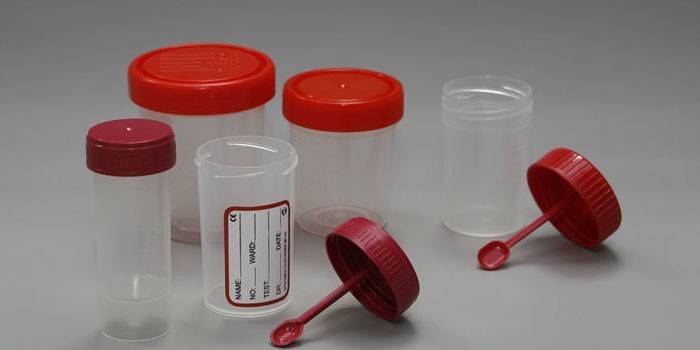Giardiasis is a common parasitic disease that occurs more often than others and, if not treated promptly, can cause serious harm to health. The disease can be asymptomatic or be accompanied by certain disorders.
In case of complaints of feeling unwell, weakness, discomfort in the abdominal cavity and vomiting with the smell of acetone, doctors prescribe patients to take a feces test for Giardia. This laboratory test will help identify a parasitic infection and choose the right treatment regimen. But in order for the analysis to show a reliable result, you need to know how to pass it correctly.
How to get tested
The study examines the feces themselves and the duodenal contents. Giardia trophozoites, adult motile microorganisms, and cysts can be found in human waste. The study is carried out in the laboratory, there are two methods of detection: antigen analysis and the PCR method - polymerase chain reaction.
How to prepare for delivery
Collecting material for research on Giardia is no different from other stool tests. Before the fence, you should not take laxatives and other medications - they can affect the final result and spoil the picture. The diet of a person in front of the fence does not matter.
Usually, tests are collected in the morning. Stool should not be collected in advance, as it cannot be stored for a long time under normal conditions. If there is an opportunity, you should collect material for research twenty to thirty minutes before delivery.
How to collect material
Collect feces for analysis with clean hands, and for collection it is advisable to use special sterile containers that are sold in pharmacies or distributed in clinics. Do not touch the sterile surface from the inside, otherwise foreign bacteria can be introduced, which will spoil the test results.
If it is not possible to purchase a special container for analyzes, the material can be collected in a glass jar or other glass container, preheated at high temperatures in the oven.

Feces should be collected from several places; a small amount is sufficient for the study.
How to store
It is not worth storing the already collected material for research, it literally begins to deteriorate due to multiplying bacteria and drying out. Therefore, after collection, the material should be immediately delivered for analysis to the selected laboratory.
If there is no such possibility at all, you can use preservatives specially existing for such cases. The most common preservative is Safaraliev or Turdyev. It is poured into a container in which the material for research will be stored, then feces are placed there.
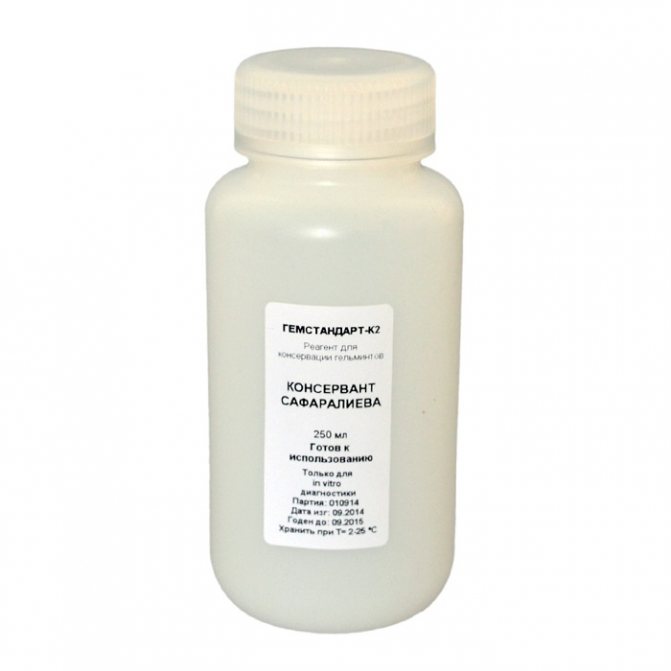

Collection of material
In order for the interpretation of the analysis to be reliable, the feces are collected in a disposable sterile container with a tight-fitting sealed lid. You can buy such a jar at any pharmacy. Alternatively, a small glass or plastic container can be used to collect faeces and must be washed and dried beforehand.
To minimize the risk of foreign microbes and bacteria getting into the biomaterial, feces are collected using a special plastic spoon or a sterile spatula. It is important to take into account that feces must be collected after spontaneous bowel movements (without the use of enemas and laxatives), otherwise foreign impurities may get into them.
Before emptying the intestines, you need to empty the bladder, which will help to avoid the ingress of urine into the test material. Next, you need to wash the anal area with Furacilin and wipe dry with a towel. Cysts are best found in liquid feces, so it is worth collecting the last portion of biomaterial.
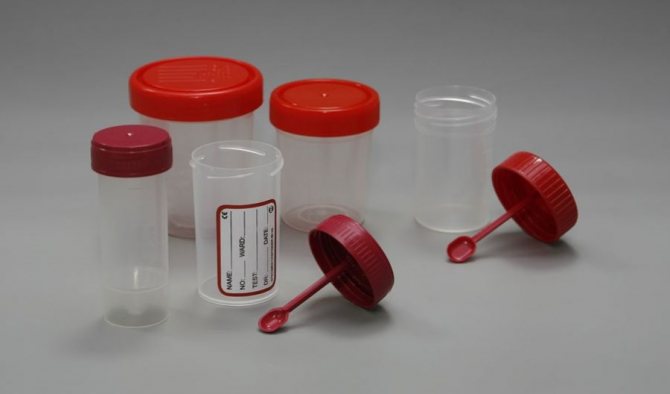

It is strictly forbidden to use matchboxes to collect biomaterial, since they absorb the fecal component and violate its consistency, which leads to a distortion of the result
How many times to take the analysis
The accuracy of a once passed analysis tends to 70%, which is not the best indicator. Therefore, a study to identify giardiasis should be carried out several times for more accurate results.
The analysis of feces for lamblia in children and adults recommends taking every day for 3-4 days, since the presence of traces of the vital activity of parasites may not be in everyone. The triple study increases the accuracy of the analysis up to 90%.
It is also necessary to conduct a fecal study after treatment for giardiasis, preferably also several times. This is necessary to confirm that the infection is completely gone. To make the picture of the disease more complete, in addition to the analysis of feces, it is advised not to neglect other diagnostic methods.
Important! Stool analysis can be supplemented with a blood test for antibodies to lamblia.


Polymerase chain reaction
Fecal PCR is carried out in order to detect the presence in the body of diseases of an infectious origin, sexually transmitted diseases and helminthic invasion. The positive properties of this study include the following.
- The ability to determine the type of pathogen. Unlike conventional analysis, the presence of DNA fragments of parasites is determined.
- High level of sensitivity. It is possible to identify a parasite, even if the test material contains single cells of parasites or viruses.
- The ability to quickly get the result - a few hours are enough to process the material.
Before taking a stool test for PCR, you must adhere to the following recommendations.
- A few days before the study, it is necessary to stop using laxatives and rectal suppositories.
- It is forbidden to take any medications that have the property of changing the color of feces - for example, medications containing iron in their composition.
- Use specially designed sterile containers with a stick for collection and transportation. The container is sterile, therefore it is prohibited to wipe its inner surface, wash it or touch it.
- Make sure that the feces are not contaminated with urine.
- Do not carry out any interventions before taking the analysis - for example, enemas.
- The collection of material for research should be carried out with a special stick.
- The collected feces on lamblia should take up no more than one third of the container.
At first glance, the requirements for the collection of material for the PCR analysis are simple, but it is necessary to carefully monitor their observance. If at least one item is ignored, the results may be unreliable. As a result, the wrong diagnosis will be made and the wrong treatment will be prescribed.
If, after the studies, you are concerned about doubts about the reliability of the results, then in this case you can take a blood test for Giardia antigen. Such a study is also called enzyme immunoassay.In the case of the presence of parasites in the body, it will be positive.
Remember: even in the absence of clinical manifestations of infection, it is recommended to carry out an examination for giardiasis with a prophylactic purpose, especially for children.
If a positive result is observed, the appointment of treatment should be carried out only by a qualified specialist.
So, we examined what tests can be carried out to identify lamblia in the body, as well as the requirements for the result of the study to be reliable.
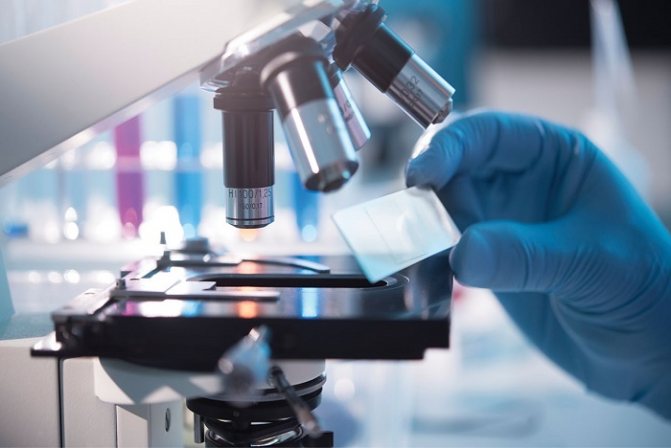

Giardia - harmful microorganisms parasitizing in the human gastrointestinal tract and causing the dangerous disease giardiasis. They provoke the development of many symptoms, expressed by allergic reactions, digestive disorders and other signs of malaise. One of the most effective methods for diagnosing the disease is the analysis of feces for lamblia.
The main problem in identifying an infection is the non-obviousness of the symptoms, which may be a consequence of the invasion of another type of parasite or a disease of a completely different nature. Therefore, it is important to conduct all the necessary research, otherwise it will be difficult to find the right treatment.
The easiest and most effective way to detect giardiasis is stool analysis. Since parasites live in the gastrointestinal tract, traces of them are always present in the waste of the human body. There are several techniques for examining feces to identify parasitic invasion.
In addition to this study, a blood test is also carried out to detect giardiasis, an ultrasound scan. It is better to carry out a complete survey that will help establish a complete picture of the infection.
Important! The analysis of feces for giardiasis is considered a mandatory study, and all others can only be an addition.
Where to take
If there is a suspicion that the body is affected by lamblia or other parasites, you should contact a gastroenterologist or therapist to get a referral for research in a regular clinic. This method will be absolutely free.
If you don't have time to wait and you want to get the result right away, with which you will later have to see a doctor, you can undergo an examination in a private laboratory or medical center. The cost of the analysis in this case can range from 300 to 1000 rubles, depending on the type of research and the chosen center.
The analysis of feces for lamblia is positive: what to do
If the test result is positive for giardiasis, you should contact a gastroenterologist with an explanation. Do not panic: giardiasis responds well to treatment and with the correct treatment regimen, the symptoms disappear after a few weeks, and the body quickly returns to normal.
Having looked at the conclusion of the study, the attending physician can send for additional examination, then prescribe treatment. Therapy for giardiasis is usually complex, various medications are required, the following means are usually used:
- enterosorbents, hepatoprotectors;
- antibacterial agents, antibiotics;
- antihistamines for allergic reactions and other medications.
Causes of giardiasis
The carrier of the disease is a sick person, birds, pets. Protozoa enter the body through the fecal-oral route. Giardia antigen in feces, which can be detected by analyzing feces for lamblia, is found for a long time, the microbe begins to actively multiply. After contact with an infected person, a person gets sick with unwashed hands, dirty objects (toys), contaminated water.
Most often, the disease affects children, especially those attending kindergarten, who have bad habits (bite their nails, suck their fingers).
Since after giardiasis, immunity is formed, re-infection with giardiasis is rare.
How is giardiasis detected by laboratory methods
From the above clinical symptoms of giardiasis, it is clear that patients with similar manifestations can be treated for a long time by a gastroenterologist, neurologist, ophthalmologist, dermatologist, allergist-immunologist. Ultrasound, cholecystography will only confirm the presence of damage to the hepatobiliary system, but will not help in identifying the cause.
General laboratory methods are not very specific for giardiasis, but they show the level of violations:
- In a general blood test, monocytosis and eosinophilia are usually alarming.
- Among biochemical tests, a decrease in blood protein (both albumins and globulins), an increase in the enzyme alkaline phosphatase, is revealed.
- In the analysis of feces, scatological signs of inflammation and digestive disorders are found: a lot of fatty inclusions, undigested fibers, mucus, leukocytes, erythrocytes.
The modern level of diagnosis requires a mandatory parasitological analysis for giardiasis. Given the stages in the development of the microorganism, the diagnosis should be confirmed by the identification of lamblia cysts in the feces, and vegetative forms in the contents of the duodenum. For this, microscopy of smears of the taken material is carried out.
Starting from adolescence, lamblia can be microscopically detected in the bile, it is examined after duodenal intubation. This procedure is not possible in children. Microorganisms are found on glass (invitro) by characteristic features; to improve the detection of giardiasis, a special color is used.
Infectionists recommend, for more accurate detection, to take into account the cyclical reproduction and isolation of forms of the parasite with feces. To do this, it is better to take the test again three to five times a month with intervals of 1-2 weeks.
The method is simple to carry out and does not require large expenditures. Feces are taken into a special sterile container. It is necessary to take suspicious accumulations of mucus, particles with a changed color. Cysts are detected upon delivery within 24 hours. It is much more difficult to detect the vegetative form of lamblia, since they die 60 minutes after a bowel movement. This means that the material should be delivered as quickly as possible or the collection should be done in a hospital.
The study of feces for intestinal flora is of indirect importance. The calculation shows the ability of lamblia to reduce the proportion of bifidobacteria and lactobacilli, stimulate the growth of other microorganisms, activate the appearance of pathogenic staphylococci, streptococci, fungi.
Giardiasis is a disease caused by living things (lamblia) that parasitize the small intestine. The common disease occurs more often in children. They get sick as a result of ingestion of contaminated food, water, through dirty household items, poorly washed hands.
The parasite enters the human body through the intestines, begins to multiply in the small intestine, causing damage to the mucous membrane. Moving through the intestines, parasites enter the large intestine. As a result of an unfavorable environment, they turn into cysts, leave the body naturally along with the emptying of the stomach.
Giardiasis symptoms
Giardiasis is often asymptomatic, especially in the initial stages. This makes it difficult to diagnose, therefore, the analysis of feces for lamblia is not given up. During this time, lamblia actively multiply, blocking the intestinal wall, which aggravates the course of the disease and further treatment. The symptoms of giardiasis in adults are less developed than in children, since babies have a less developed immune system.
In the later stages of the disease, symptoms appear:
- pain in the abdomen, localized under the right hypochondrium or near the navel;
- dyspeptic disorders: nausea, vomiting, changes in stool (diarrhea, constipation), bloating, heartburn;
- neurological manifestations: headache, dizziness;
- malaise: drowsiness, weakness, fatigue.
The difference between giardiasis diarrhea from other pathogens is that feces do not contain pus, impurity, blood streaks.
Bloating appears due to a change in the components of the intestinal microflora towards pathogenic intestinal pathogens that secrete waste products (gases).
Pathological manifestations cause the following conditions:
- anemia (appears due to hypovitaminosis, the number of red blood cells decreases, the skin turns pale and blue);
- weight loss occurs due to a lack of nutrients that are not absorbed through the intestines;
- the resistance (ability to resist) of immunity to foreign microorganisms decreases, a person suffers from frequent ARVI and infectious diseases;
- allergic reactions appear (you can find rashes, itching, burning on the skin).
Prevention of lamblia
An important place in the prevention of giardiasis is health education. It should be carried out, first of all, in risk groups, which include, in addition to those listed, persons visiting areas endemic for parasitic diseases, including giardiasis.
The attention of tourists should be drawn to the need to consume only high-quality thermally processed food products and boiled or filtered water. This will reduce the risk of contracting not only giardiasis, but also other infectious and parasitic diseases.
Methods for diagnosing giardiasis
It is necessary to pass an analysis of human feces or a biopsy (piece of tissue) from the surface of the small intestine. The doctor of clinical laboratory diagnostics examines the feces for protozoa and helminth eggs.
The parasite does not immediately penetrate the intestines, and it becomes difficult to identify the disease. There he is three weeks after infection, if he survives after passing through the gastric juice. Since lamblia die and develop again, once again entering the digestive tract, the analysis of feces for giardia may be negative at the time of their death.
The analysis of feces for lamblia is repeated 3 times with an interval of 7 days.
There are several ways to detect protozoan cysts in feces:
- Enterotesting. The method uses a thread made of nylon. It is contained in a capsule that dissolves after entering the digestive tract. For this, a person needs to swallow the drug. When passing through the gastrointestinal tract, parasites adhere to the thread. The drug is excreted along with feces. The method is informative, since the entire digestive tract is checked from start to finish. After receiving the filament, the laboratory technician uses a stool microscopy method.
- Biopsy of the intestinal tract. It is used when there is a suspicion of a false negative result from other methods. The method is rarely used, since it is expensive and general anesthesia is used for its implementation, which harms the human body. Allows you to assess the state of the intestinal tissue to which the disease has led.
- Immunological testing. The basis of the method is to determine the presence of antibodies in the body (protein molecules that protect the body), which are aimed at suppressing the pathogen. Since the appearance of these immunoglobulins is typical for other types of pathogens, the method loses its value.
- Additional methods: immunoelectrophoresis, immunodiffusion, enzyme-linked immunosorbent assay (ELISA). The methods allow detecting specific (inherent only to a given disease) antibodies. The sample is taken from the stool.
- Stool polymerase chain reaction. The PCR method for the diagnosis of lamblia is used to test feces for the lamblia antigen in the feces. In the laboratory, the division of protozoa is stimulated in order to be able to more accurately diagnose.
More about diagnostics, decoding
Thinking about how to correctly pass the analysis of feces for the antigen of the lamblia parasites, it is necessary to study this issue deeper. Having understood the intricacies of different methods, you can better prepare for the study and learn how to decode the answer yourself. To understand whether a parasitic disease develops in the body, you should pay attention to indicators such as antigens (enzyme formations). In their absence, it is recommended to conduct repeated studies, after a certain period of time. If the result is positive, additional tests are taken.


Stool analysis is the most reliable way to determine giardiasis in humans.
Stool antigen analysis
The provided sample contains parasite enzymes. This is clear evidence of the presence of lamblia in the body. Antigens are enzyme-linked immunosorbent formations that appear under the condition of the penetration of foreign bodies or substances. In this way, the body fights the problem that has arisen. Antigens can be detected in feces and blood. You should be aware that when transiting parasites in different forms (eggs or cysts) enter, similar formations are also produced, even though the parasites leave the body.
This is the most accurate type of research available. PCR can detect the DNA gene affected by the infection. With the help of such a study, it is realistic to find out the form of helminthiasis and determine the degree of infection. A similar study is carried out by specialized laboratories, for example, Invitro. This service is paid, but the patient will receive a more accurate answer.
How is the analysis carried out in Invitro?
Preparation and collection of material are standard procedures for which the patient is responsible. Advantages of the clinic: no queues, the ability to work on modern fully functional equipment, qualified specialists. In addition, the analysis can be passed when it is convenient, you do not need to limit yourself only to the morning hours.
Watch the video: What is required for the analysis for Giardia?
The stool test is positive - what should I do?
You need to contact your doctor for detailed instructions regarding further treatment. The course should include antiparasitic, enzyme, choleretic drugs, rehabilitation therapy (vitamins, probiotics). A diet will also be recommended.
The duration of treatment is determined by the degree of infection with lamblia. Sometimes you need to spend 2 or even 3 courses. Take a break between them. During this time, surviving or emerging giardia eggs will develop enough to be re-exposed to the drugs.


Babies are most susceptible to parasitic diseases. And this is explained very prosaically. The desire to taste everything, poorly washed hands, love of playing with pets are all potential sources of infection. That is why the same giardiasis refers to childhood diseases, although adults can also be infected with it. But this disease can and should be treated, and it is better to do it when the first symptoms appear. And where to go for help and how to get tested for lamblia in a child will be described later.
Preparation for the analysis of feces for giardiasis and the procedure
To know exactly how to properly donate feces for lamblia cysts, you need to consult your doctor. Before donating blood for analysis of feces for lamblia, the patient must adhere to the following rules:
- exclude the use of alcoholic beverages a week before testing;
- do not smoke on the day of analysis;
- cancel all medications that affect LCD and other medications, especially rectal ones (if this is not possible for health reasons, warn the attending physician and laboratory assistant about the drug used);
- apply a diet (do not eat fatty, fried, salty);
- do not apply physical activity before the test;
- analysis of feces for lamblia is taken on an empty stomach (the stomach must be empty, write the last meal 8 hours before the study);
- on the day of the test, you can only drink non-carbonated water;
- you need to pass the analysis before physical research methods (ultrasound, X-ray) or 2 weeks after them.
Important! If the rules for preparing for the analysis of feces for lamblia are violated, the study should be postponed, otherwise an unreliable result will be obtained, the doctor will prescribe the wrong treatment or miss the disease associated with the appearance of parasites.
Blood sampling on Giardia is carried out from a vein in the morning (before 10:00).
Deciphering the analysis of feces on lamblia
Deciphering the analysis of feces for lamblia in adults is a therapist or infectious disease specialist. When analyzing blood for lamblia, immunoglobulins (Ig) directed against the pathogen are determined. For the acute phase of the process, the determination of IgM antibodies is characteristic, for the chronic - IgG. If both indicators appear, then the disease is neglected, severe inflammation occurs.
Analysis of feces for lamblia shows a negative value (absence of lamblia) or a positive result (if cysts of lamblia are found in the feces of an adult or child). In any case, the study is re-handed over, as it may be unreliable.
What to do if the analysis shows the presence of lamblia
If lamblia is found in the blood of an adult or child, it is necessary to examine all members of his family, especially if the person lives in conditions of low risk of re-infection from the external environment. Treatment is carried out with antiparasitic agents (Metronidazole, Albendazole, Tinidazole).
A 7-day therapy course helps to get rid of parasites in 80% of cases. During treatment, it is recommended to follow a special diet and drinking regimen to prevent dehydration. In addition, it is necessary to disinfect all objects with which the infected person came into contact, and to carry out wet cleaning in the house.
All iLive content is reviewed by medical experts to ensure it is as accurate and factual as possible.
We have strict guidelines for the selection of information sources and only link to reputable websites, academic research institutions and, where possible, proven medical research. Note that the numbers in brackets ([1], [2], etc.) are clickable links to such studies.
If you believe that any of our content is inaccurate, out of date, or otherwise questionable, select it and press Ctrl + Enter.
The suspicion of parasite infestation arises in the presence of persistent dyspeptic disorders. Giardiasis is a protozoal infection caused by the smallest intestinal parasites Giardia or Giardia. The disease is well researched, modern methods of its treatment give a 100% cure effect. The main thing is the timely diagnosis of infection with these particular parasites, and the doctor can get the basic information from the results of laboratory tests for the presence of giardiasis in the patient.
[1], [2], [3], [4], [5], [6], [7], [8], [9], [10], [11], [12]
Treatment of giardiasis
If in the analysis of feces, cysts of lamblia are revealed, then treatment is urgently started. Treatment of the disease is carried out in three stages. This is preparation, destruction of the parasite and restoration of the body. This technique is necessary because the therapy is carried out by aggressive methods that negatively affect the immune system.
Preparatory stage for the treatment of giardiasis
Preparation includes the application of the correct diet, balanced nutrition, which will reduce the amount of sugars from food and increase protein. This method is used to deprive parasites of the nutrient medium - carbohydrates. Giardia in children and adults is weakened and easier to eradicate.
For a sufficient intake of protein, they consume meat of any origin, dairy products (kefir, milk, sour cream).It is necessary to consume more plant fibers that promote digestion (bran, rolled oats).
For better assimilation of food, the time of its intake is crushed by 6 times a day. Bile begins to be secreted more often, which contributes to the destruction of the protozoa in the feces.
- fat (vegetable, animal);
- muffins, confectionery;
- eggs (more than 1 piece per day);
- mushrooms;
- soda.
Drug treatment of giardiasis
Medication therapy is carried out only after the start of the diet. Medicines used:
- Sorbents (Smecta, activated carbon, Enterosgel). They bind the waste products of lamblia in adults and children, which lead to intoxication of the body, bringing them out.
- Laxatives (Duphalac). Medication is taken when constipation occurs. Use drugs that are not addictive.
- Antiparasitic agents (Tinidazole, Metronidazole). Completely destroy parasites with the correct dosage and full course. Negatively affect liver function.
To restore the body, doctors advise consuming a lot of fluids, drinking agents that restore the intestinal microflora (Normobact). Antihistamines are used, since the decay products of lamblia cause allergic reactions.
Giardia is one of the most common parasites that humans can contract. Like many others, they cause significant damage to the health of the body and disrupt the work of internal organs. It is known that lamblia cannot always be detected the first time. How do you need to take a feces test for lamblia to make sure they are absent?
Diagnosis of giardiasis
You can diagnose lambiosis by the following methods:
- instrumental (ultrasound of internal organs);
- laboratory (analysis of feces and blood);
- based on patient complaints and clinical symptoms.
The most reliable and simplest is the analysis of feces for lamblia, however, it is not always possible to get the correct results the first time. The study of feces allows you to see the presence of the lamblia themselves, as well as their eggs.
Giardiasis is often asymptomatic or the patient's complaints are minor. This is exactly the case when it is important to undergo preventive examinations or take tests for prevention and timely identification of problems. For example, prophylactically for lamblia, they examine:
- Schoolchildren before the start of the new school year.
- Children and adolescents before registration in a sanatorium, camp, circle and other institutions.
- Medical professionals and catering kitchen staff.
- Persons in contact with parasitic carriers.
Naturally, people who have complaints with parasitic symptoms undergo an extraordinary examination.
How to get tested
Adult lamblia quickly die in the external environment. They live no more than 1 hour, therefore, they are detected in only 5% of those infected, provided that the material is quickly collected and analyzed. Cysts live longer and are more likely to be detected in the stool.
You should know that lamblia cysts are not constantly excreted in the feces. Cyst discharge is wavy in nature, and periods of "calm" can last up to 17 days. For a reliable result, the analysis is recommended to be repeated several times.
The material becomes much better for future research, subject to the following recommendations:
- A week before the analysis, do not take preparations of the sorbent group, antiparasitic and others that can affect the viability of lamblia.
- Before taking the analysis, laxatives are prescribed, which will allow you to get material from all parts of the intestine. This is important because Giardia parasites in the upper small intestine.
- If it is impossible to examine the feces immediately, it is mixed with preservatives in order to preserve the viability of the cysts.To do this, the patient can take a container with a preservative in the laboratory in advance, and then place the material there.
Ways of infection with lamblia
The source of infection with lamblia is people infected with this parasite. In the intestines of infected people, adult lamblia are covered with a dense membrane and turn into so-called cysts, which are excreted in the feces. Giardia cysts are very resistant to external influences and can survive for a long time in the external environment.
If cysts in water or food are swallowed by a healthy person (for infection, it is enough for only 10 parasite cysts to enter the body) - within a short time they will turn into adult lamblia, which will begin to multiply rapidly.
Parasites are transmitted mainly from person to person. Having formed in the intestines of an infected person, the cysts of lamblia in the feces are excreted. They are resistant to external influences, capable of surviving for a long time in the external environment.
In children's groups, a child can become infected with lamblia through dishes, common toys. Cysts that enter the human body with food or water will turn into trophozoites in a short time and begin to multiply rapidly.
PCR method
For the last few years I have been feeling very bad. Constant fatigue, insomnia, some kind of apathy, laziness, frequent headaches. There were also problems with digestion, bad breath in the morning.
All this began to accumulate and I realized that I was moving in some wrong direction. I began to lead a healthy lifestyle, eat right, but this did not affect my well-being. The doctors, too, could not really say anything. It seems like everything is normal, but I feel that my body is not healthy.
Then I went to one expensive clinic and passed all the tests, and so in one of the tests I was found to have parasites. These were not ordinary worms, but some specific species, which, according to doctors, almost everyone is infected, to a greater or lesser extent. It is almost impossible to remove them from the body. I took a course of antiparasitic drugs that were prescribed to me in that clinic, but there was almost no result.
A couple of weeks later, I came across an article on the Internet. This article literally changed my life. I did everything as it was written there and after a few days, I felt significant improvements in my body. I began to get enough sleep much faster, the energy that was in my youth appeared. The head no longer hurts, there is clarity in consciousness, the brain began to work much better. Digestion has improved, in spite of the fact that I now eat at random. I passed the tests and made sure that no one else lives in me!
Who wants to cleanse their body of parasites, and it doesn't matter what types of these creatures live in you - read this article, I'm sure it will help you 100%!
A specific method, which is still rarely used, is the detection of lamblia by polymerase chain reaction (PCR). The reaction allows you to identify the DNA of the parasites. The principle of operation of the method is rather complicated and was previously used only for scientific research. Now the PCR method is very promising and is gradually being introduced into laboratory practice. The reliability of the method is very high (about 95%). The advantage is also the ability to detect invasion even during periods of "calm" cyst secretion. The research process takes no more than 1 day and allows you to reliably identify many types of pathogens.
Treatment
If the analysis of feces for lamblia is positive, then the doctor prescribes appropriate treatment. As a rule, it is quite simple and does not require significant costs. The main thing in the treatment is the choice of the right drug, adherence to the dosage and the correct duration of treatment. The range of antiparasitic agents is quite wide, but only a doctor can choose the most suitable drug, taking into account the type of parasite isolated.
Most of the drugs are approved for use in children and are even available in special forms for children. This is a very correct decision of pharmaceutical companies, since it is children who are most susceptible to parasitic infestations.
But during pregnancy, such drugs are not allowed because of their high toxicity. Therefore, future parents are advised to take all the necessary tests during pregnancy planning.
Giardia can go unnoticed for years and do not provoke critical conditions in a patient. However, they take for themselves a significant part of nutrients, impair digestion, cause allergic reactions and negatively affect the nervous system. Treatment of giardiasis must be carried out without fail. For preventive purposes, it is allowed to take some anthelmintic drugs without first taking tests.

